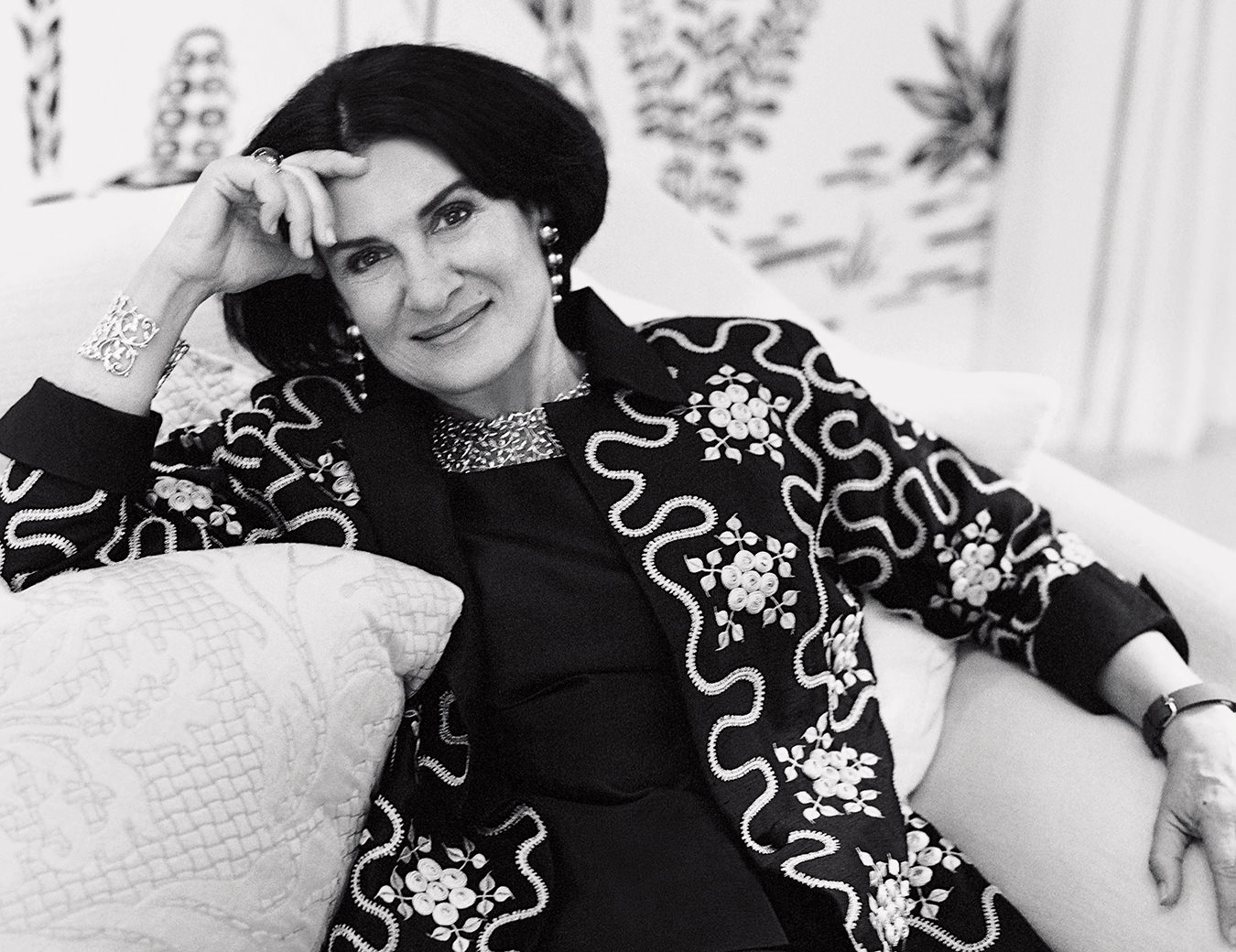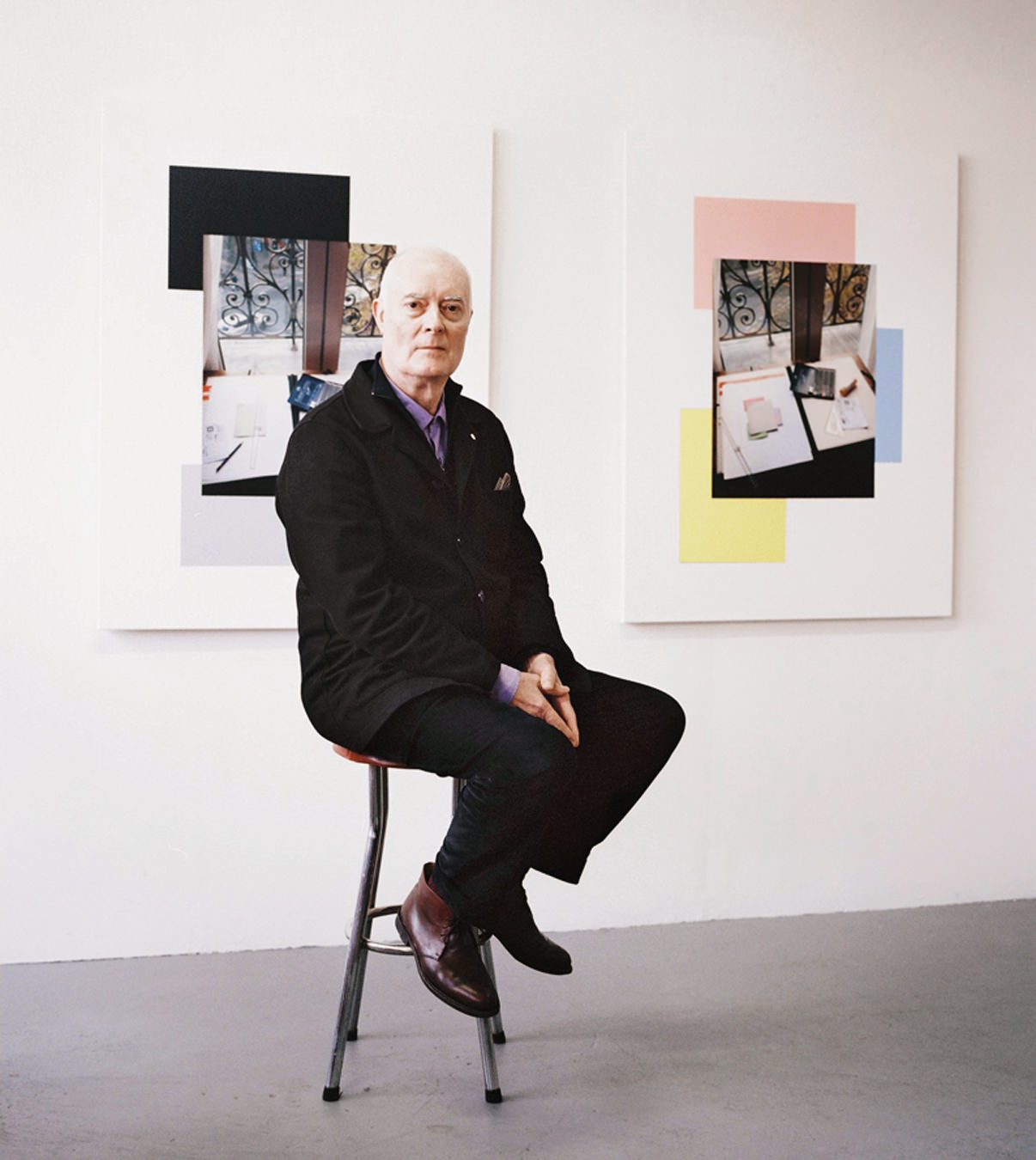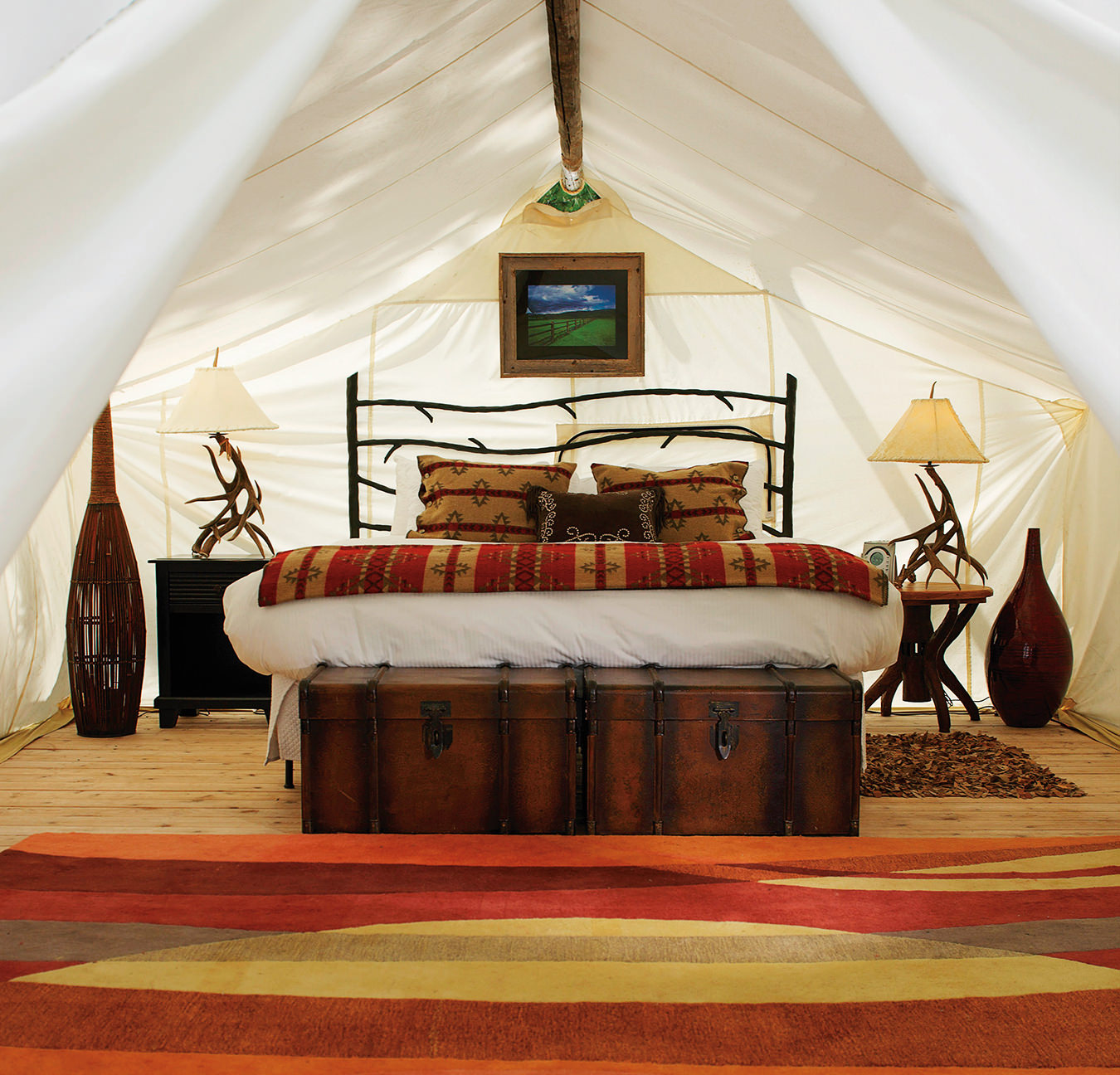Aberto Celebrates the Work of Asian Brazilian Polymaths in Their São Paulo Homes
For the past decade or so, Brazilian midcentury modernist furniture has taken the collectible design market by storm. Works by the likes of Lina Bo Bardi, Sergio Rodrigues, and Joaquim Tenreiro, amongst other era-defining talents, have become regular highlights at major fairs and auctions. While several American and European blue-chip galleries claim to have rediscovered this long-overlooked source of historic innovation—the use of locally sourced or naturally felled materials before it was popular to do so—they’ve only really scratched the surface.
As the latest edition of the annual São Paulo exhibition Aberto reveals, the scope of this vast country’s creative output is as varied as it is prolific. People often forget that, like most South and North American nations, Brazil has long been a melting pot of cultures, with influences from different parts of the world leaving an indelible mark on its art and design scenes, eventually melding together in nascent and interdisciplinary ways.
Cases in point are Kyoto-born abstract artist Tomie Ohtake and Shanghai-born architect Chu Ming Silveira. Both talents had an outsized impact in their respective fields during the mid-20th century and even represented Brazil at major international events such as the Venice Biennale. While Ohtake’s intimate and large-scale public sculptures can still be found throughout the city, Silveira is perhaps most recognized for her egg-shaped Orelhinha and Orelhão telephone booths that once dotted the metropolis.
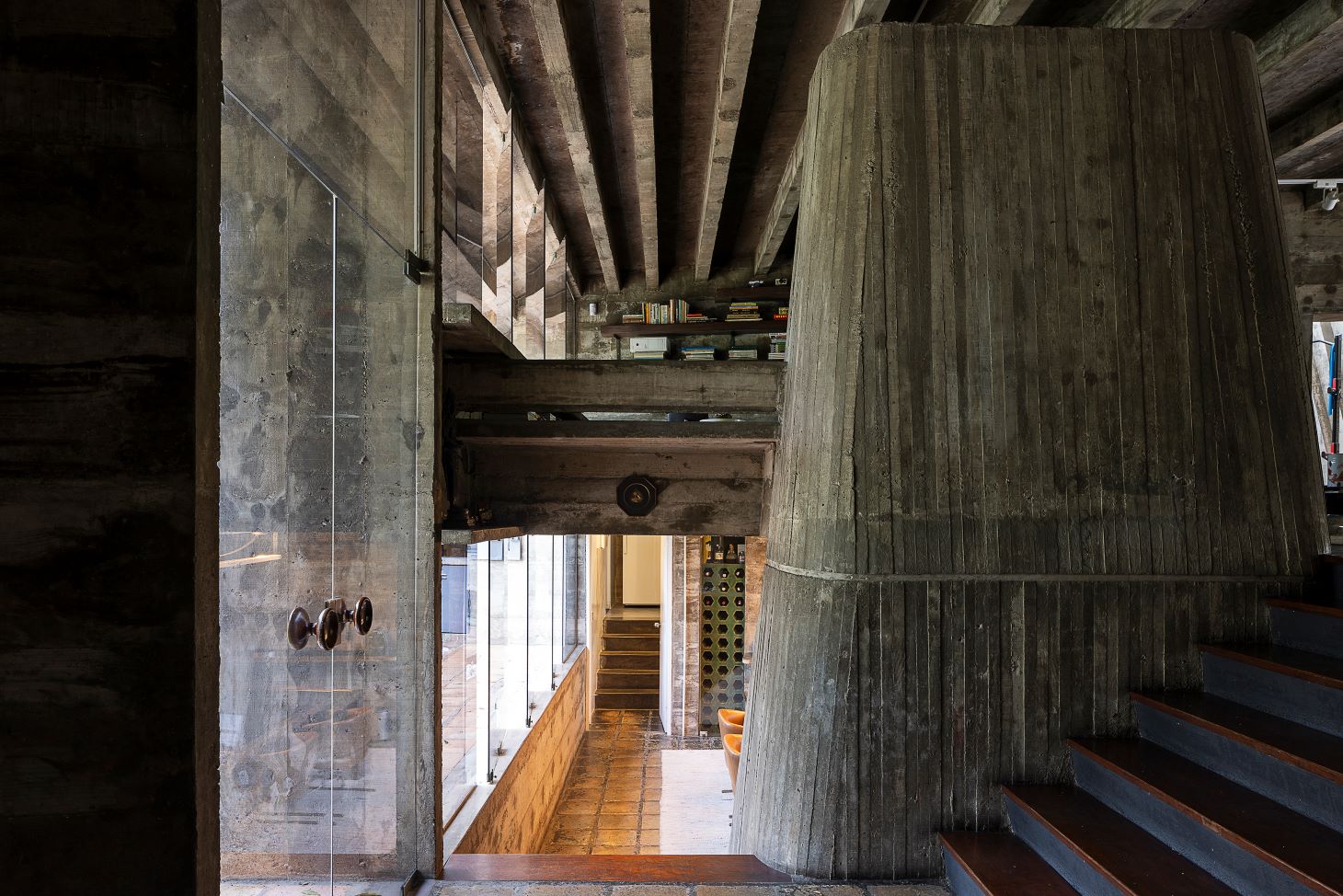
Photo of Silveira residence by Leonardo Finotti
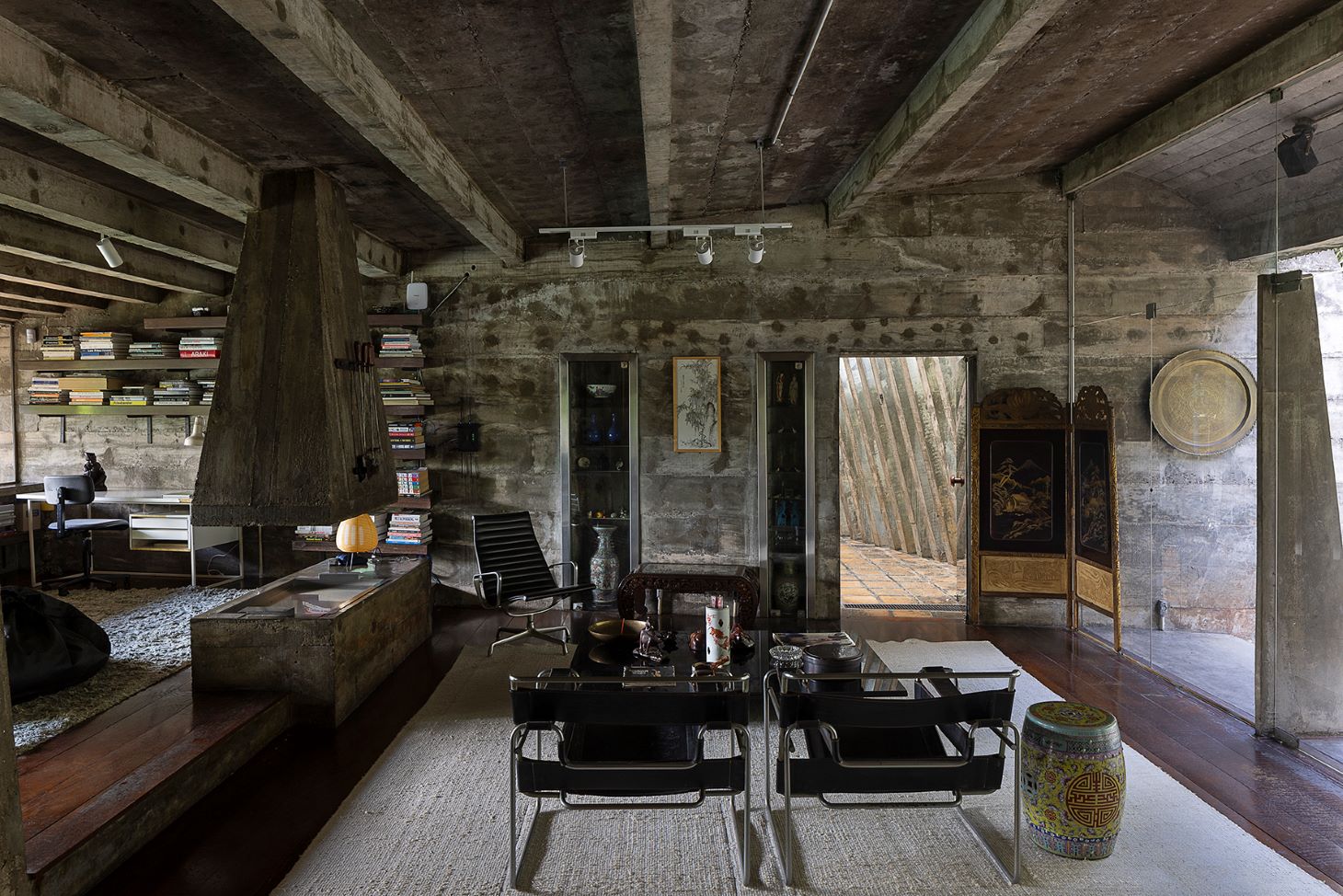
Photo of Silveira residence by Leonardo Finotti
Established by up-and-coming art adviser Filipe Assis, Aberto is a “new concept” annual showcase that contextualizes a selection of pieces that transcend disciplinary definitions and stages them in significant homes throughout the city and its environs. For its third edition, held this year from August 10 to October 6, the founder and his team set out to shed fresh light on these two talents’ practices and open up their homes as unlikely but appropriate exhibition spaces.
This holistic approach aligns with the postpandemic push to break out of traditional white cube galleries and implement often underused historic sites as immersive backdrops for temporary showcases. These locales indirectly or, as in this instance, directly provide context for the exhibited work, revealing links between the architecture and objects on view.
“The concept of Aberto takes roots in the iconic 1922 Modern Art Week, a cornerstone movement that brought together artists, architects, and writers, while establishing the groundwork for a creative intersection among disciplines,” Assis says. “This event inspired our ongoing exploration of Brazilian modernism and its relevance in contemporary culture where art, design, and modern architecture come together.”
Designed by her son Ruy Ohtake, a prolific architect in his own right, Tomie Ohtake’s 750-square-metre Campo Belo-area home/studio was constructed in an emphatically late-1960s style but with colourful accents reflective of her seminal Blind Paintings series. Completed around the same time and with a similar use of formwork concrete, Silveira’s Morumbi neighbourhood residence is indicative of her proprietary “post-caiçara” style: the blending of contemporary materials with vernacular typologies specific to local communities. Though decidedly late modern in style—championing function over frivolity—both sprawling properties respect nature and simplicity in equal measure. Large curtain walls ensure even, almost seamless, connections between the stark, albeit textured, indoors and lush subtropical outdoors. In true yet nonreductive Brazilian fashion, organic lines interplay with industrial components.
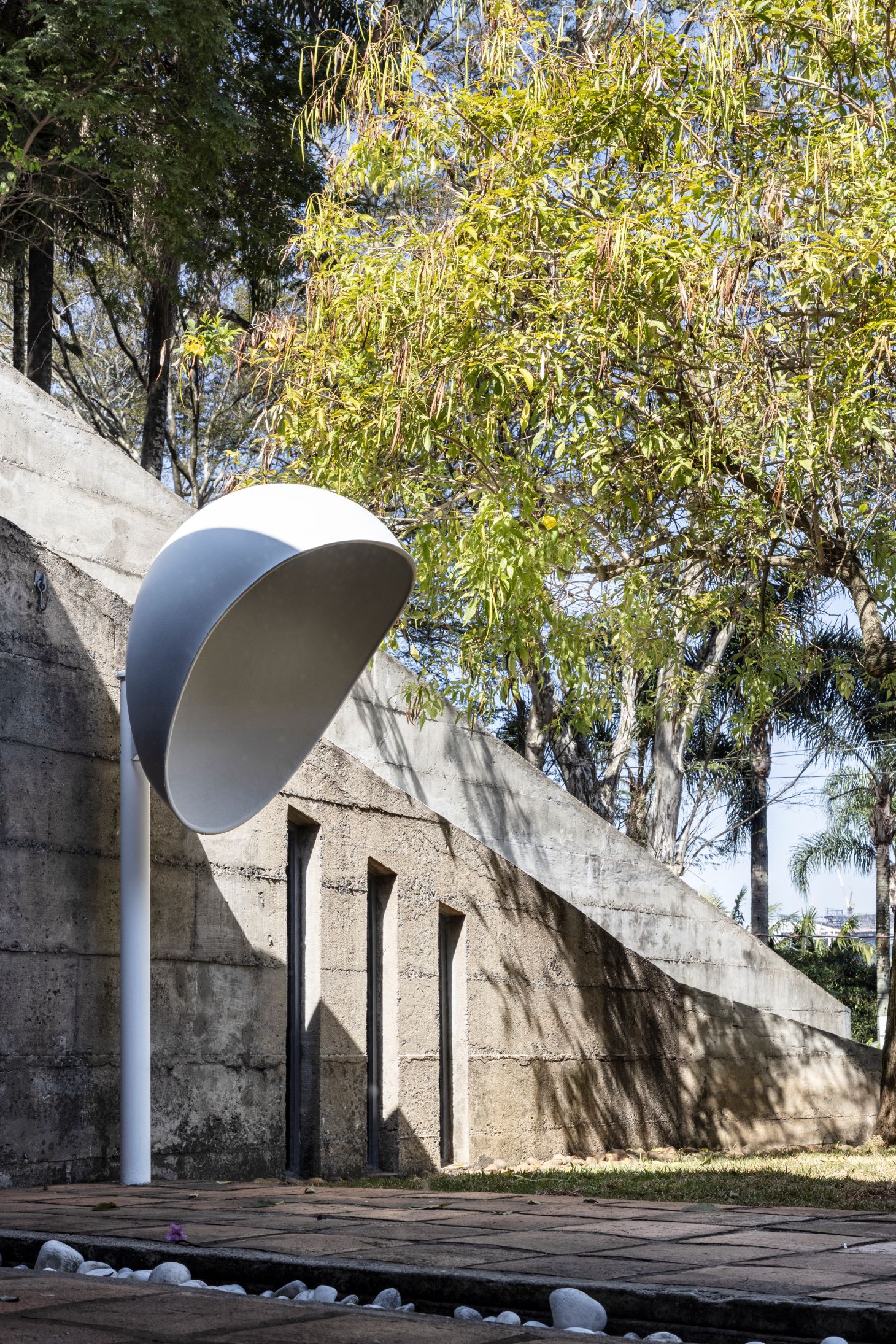
Silveira residence by Ruy Teixeira
For Aberto/03, Assis tapped noted curator Kiki Mazzucchelli and designer Claudia Moreira Salles to choreograph the two locations, tracking the trajectories of Ohtake and Silveria’s dynamic careers while also introducing works by other historic and contemporary talents in response to respective facets of their practices.
“The first edition of Aberto, held in 2022, took place at the only remaining house designed by Oscar Niemeyer in São Paulo and was characterized by his Rio de Janeiro-school-style use of more organic and fluid curves,” Mazzuchelli says. “In 2023, the exhibition was staged at a house by Vilanova Artigas, the godfather of the Paulista school, with their typical brutalist design and use of bare-concrete structures. This year, we decided to turn our focus to a younger generation of architects who followed the principles of São Paulo brutalism, expanding them into new forms.” For the first time, the exhibition will occupy two houses, connected to important female figures of Asian descent whose contributions to the fields of architecture and art are invaluable in Brazil. Both were designed as their families’ residences, with singular architectural features.
Taking this context into careful consideration, Mazzucchelli and Moreira Salles sought to both respect the distinct attributes of each property and also stage a coherent exhibition between the two. While the Silveira house presents works by revered masters who have created their main body of work up until around 2000, the focus at the Ohtake home is on contemporary artists, particularly on newly commissioned works. Partnering galleries include Fortes D’Aloia & Gabriel, Mendes Wood DM, Luisa Strina, Nara Roesler, and Etel, amongst others.
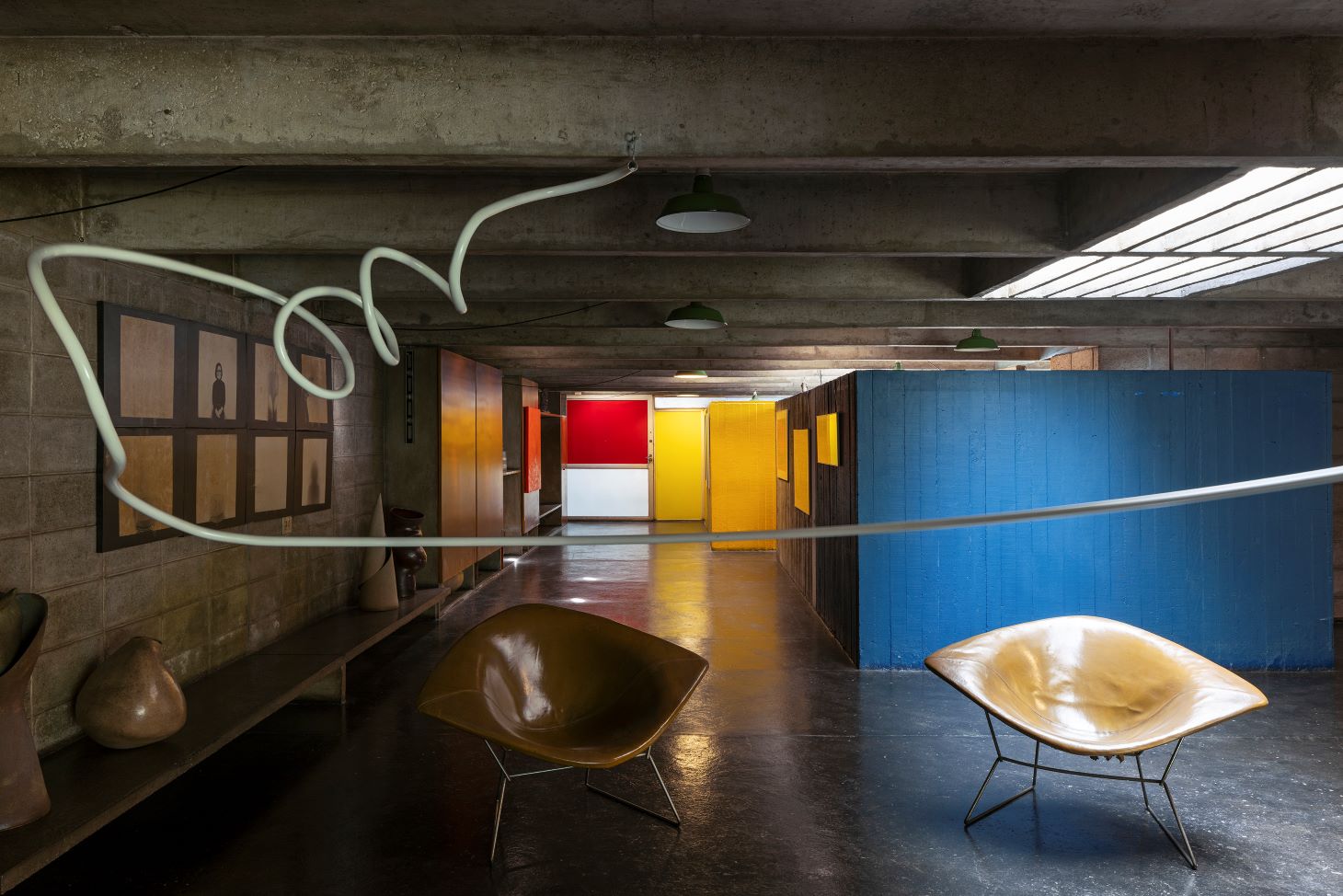
Photo of Tomie Ohtake residence by Leonardo Finotti
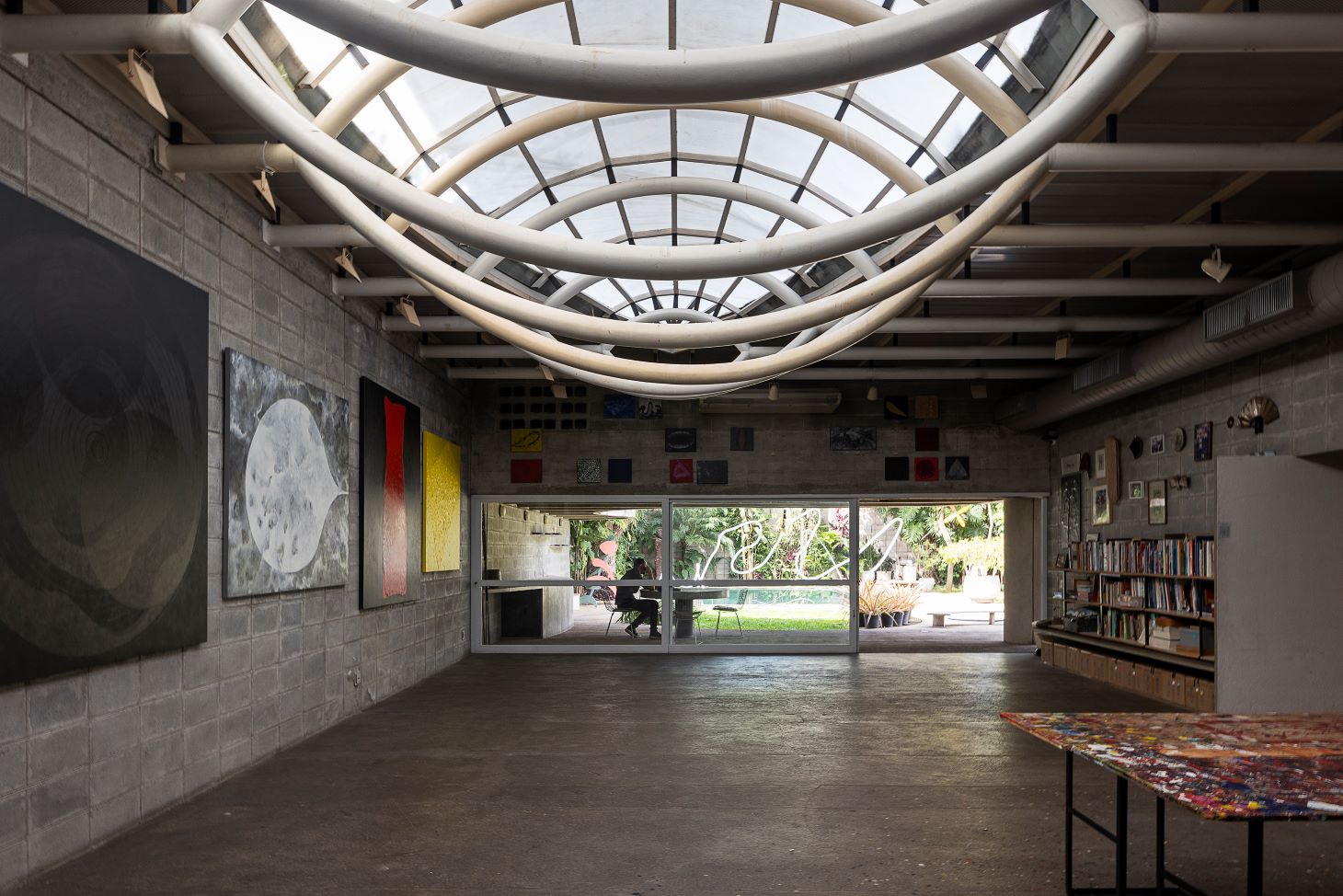
Photo of Tomie Ohtake residence by Leonardo Finotti
“In the living room of Silveira’s home, we are bringing in works by a group of female masters including Carmen Herrera, Wanda Pimentel, and Anna Maria Maiolino, who was awarded the Golden Lion for Lifetime Achievement at the Venice Biennale this year. The three are prolific artists who only achieved overdue recognition in the past two decades,” Mazzucchelli says. Abraham Palatnik’s especially rare Aparelhos Cinecromáticos (Cinechromatic Devices) kinetic sculptures from the 1950s are also on view.
Several of the exhibitors visited the Ohtake home in advance and conceived works for specific spaces, potentializing the dialogue between art and architecture. Among the commissioned works, there are paintings by midcareer artists Sandra Cinto, Fabio Miguez, and Daniel Senise, sculptures by American artist Arlene Shechet, and those by a new generation of female Brazilian painters: Fernanda Galvão, Sophia Loeb, and Luisa Matsushita.
One of the highlights is works by American talent Torkwase Dyson, which are displayed alongside pieces by a new generation of Black Brazilian artists who also explore abstraction and materiality as means of cultural commentary. Lenora de Barros is debuting a new sound piece exploring the nooks and crannies of the house. Luiz Roque is presenting a new fictional film investigating Ruy Ohtake’s life and work.
“Something that is shared by both the Ohtake and the Silveira families is that the artistic talent of the matriarchs was passed down to younger generations,” Mazzuchelli says. “It is likely that the characteristic use of colour in Ruy Ohtake’s architecture was directly influenced by his mother’s work. His son, Rodrigo Ohtake, also became an architect and, like his father, has designed iconic pieces of furniture. Both father and son’s furniture will be shown by Etel at the Ohtake House.”


